Wenceslas Square: Epicenter of Prague’s Culture
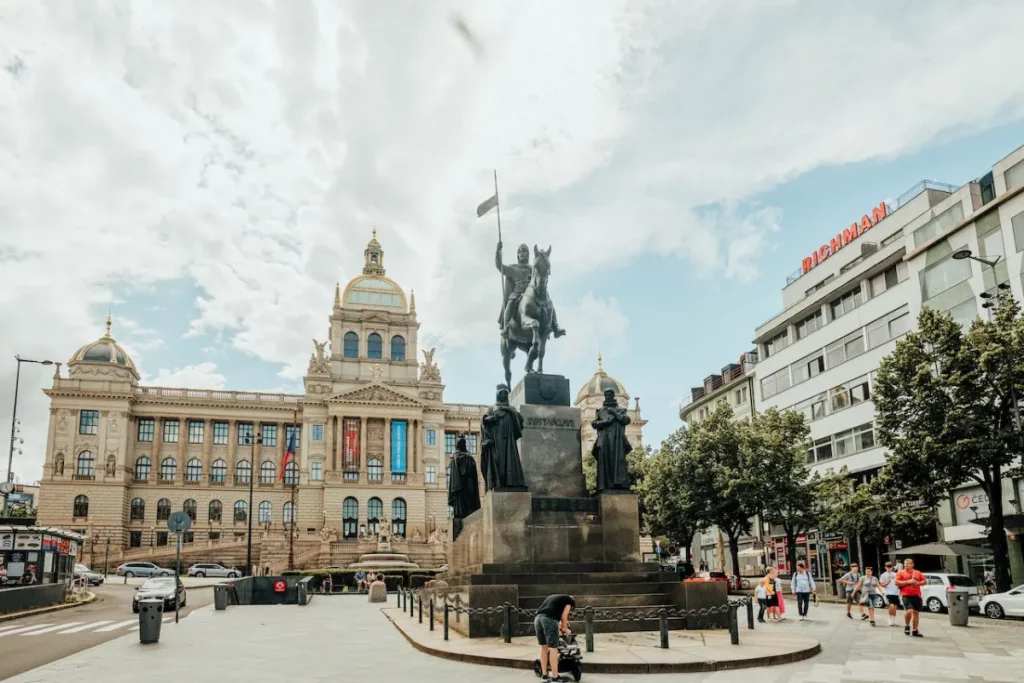
Wenceslas Square is one of the most iconic landmarks in Prague. Located in the heart of the New Town district, this city square has been a cultural and business centre for centuries. Named after Saint Wenceslas, the patron saint of Bohemia, it is a popular destination for locals and tourists alike.
Measuring 700 meters long and 60 meters wide, Wenceslas Square is a broad boulevard that has witnessed many significant events in Czech history.
It was the site of a giant Mass during the revolutionary upheavals of 1848, and in 1918, the creation of the new Czechoslovak Republic was celebrated here. The square was also the site of many anti-communist protests in 1989.
Today, Wenceslas Square is a bustling commercial and social scene, with shops, cafes, hotels, and nightclubs lining its main avenue. The square is home to the Prague National Museum and a bronze statue of Saint Wenceslas.
Whether you are interested in history, culture, or shopping, Wenceslas Square is a must-see place when visiting Prague.
Historic Evolution of Wenceslas Square
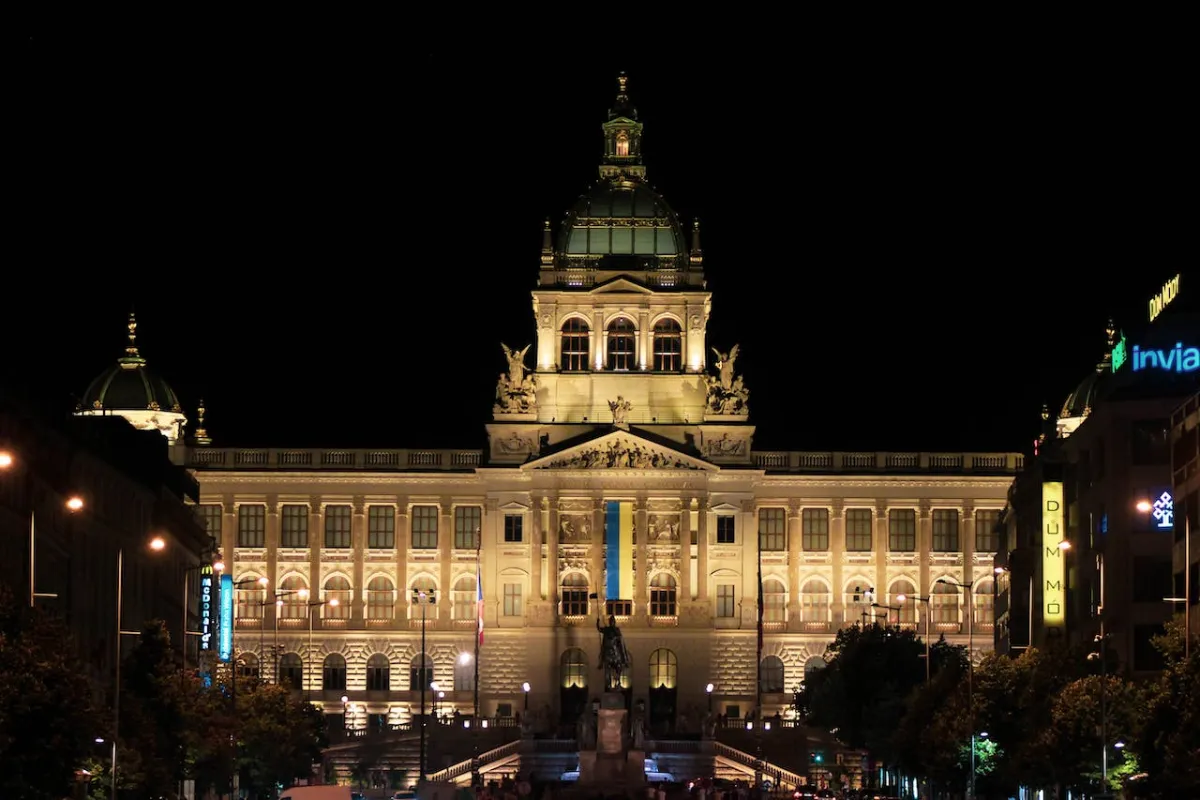
National Museum on Wenceslas Square in Prague at night, ©Nair / Pexels
Wenceslas Square, located in the heart of Prague, has a rich history that spans centuries. From its origins in the Middle Ages as a horse market to its role in the Czech National Revival and the Velvet Revolution, the square has witnessed many historical events.
Middle Ages Origins
Originally known as Koňský trh (Horse Market), Wenceslas Square served as a horse marketplace during the Middle Ages. Over time, it evolved into the city’s commercial and cultural centre. In the 14th century, it was paved and became a popular location for markets and public gatherings.
Czech National Revival
During the 19th century, Wenceslas Square played a significant role in the Czech National Revival. In 1848, it was renamed Svatováclavské náměstí (Saint Wenceslas Square) in honour of the patron saint of the Czech Republic. The square was the site of many demonstrations and protests for Czech statehood and independence.
Warsaw Pact Invasion
In 1968, the Warsaw Pact invaded Czechoslovakia, and Wenceslas Square was the site of the Prague Uprising against the Soviet Union. The square was the scene of violent clashes between protesters and Soviet troops, with many casualties on both sides.
Velvet Revolution
In 1989, Wenceslas Square played a pivotal role in the Velvet Revolution, which saw the overthrow of the Communist government in Czechoslovakia.
The square was the site of many protests and demonstrations, culminating in a massive rally on November 25, 1989, which drew over 500,000 people. Overall, Wenceslas Square has played a significant role in the history of Prague and the Czech Republic.
From its origins as a horse market to its role in the Velvet Revolution, the square has witnessed many historical events. It remains an important cultural and commercial centre.
Impactful Events
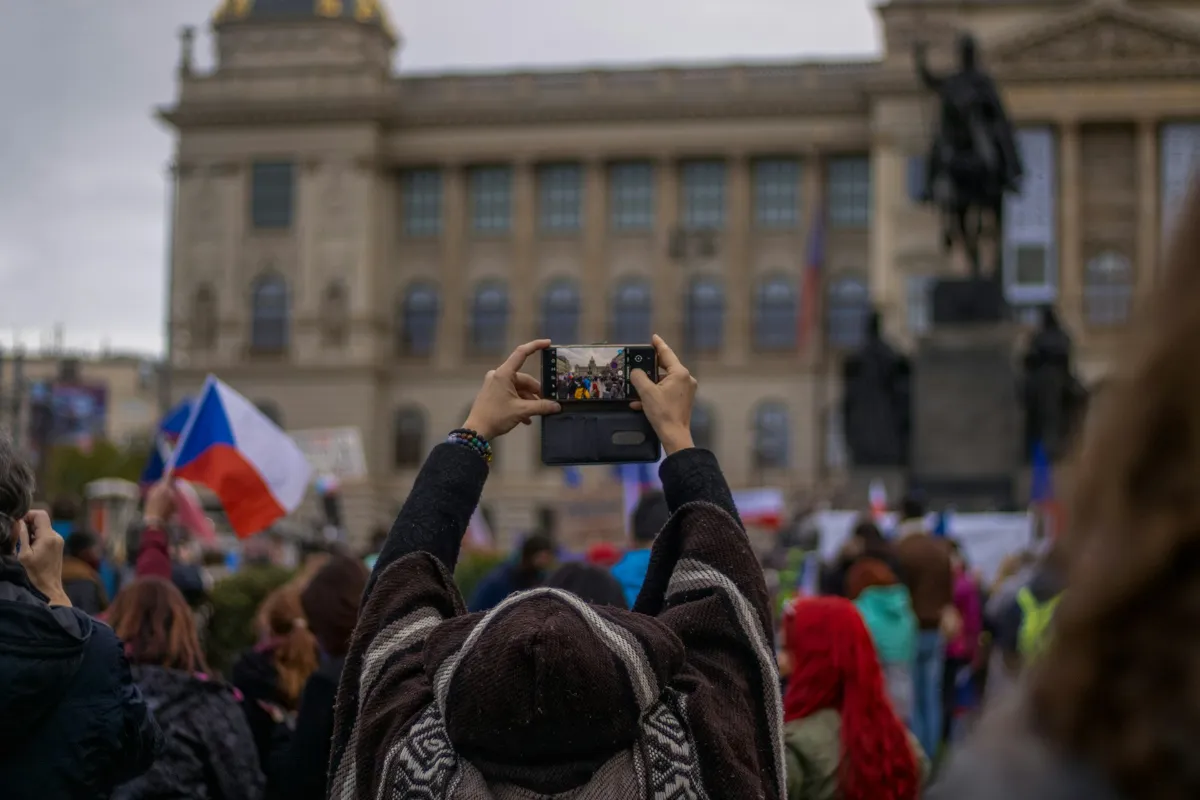
Tourist is capturing a photo of the National Museum at Wenceslas Square, ©Tran / Unsplash
Wenceslas Square has been a witness to many significant events throughout Czech history.
Here are some of the most notable ones:
Jan Palach Protest
One of the most memorable events in the history of Wenceslas Square was the protest of Jan Palach in 1969.
Palach set himself on fire in the square to protest against the Soviet invasion of Czechoslovakia. This event sparked widespread protests and demonstrations against the communist rule.
Student Demonstrations
Wenceslas Square was also the site of many student demonstrations against the communist government. In 1989, thousands of students gathered in the square to protest against the government’s handling of a peaceful student demonstration.
The protest quickly turned violent, and the police responded with force. This event triggered the Velvet Revolution, which ended the communist rule in Czechoslovakia.
During the communist rule, Wenceslas Square was a traditional venue for demonstrations, celebrations, and other mass gatherings.
The square witnessed many angry citizens expressing their dissatisfaction with the government. Today, the court is a popular tourist destination and a symbol of Czech history and culture.
Cultural Significance
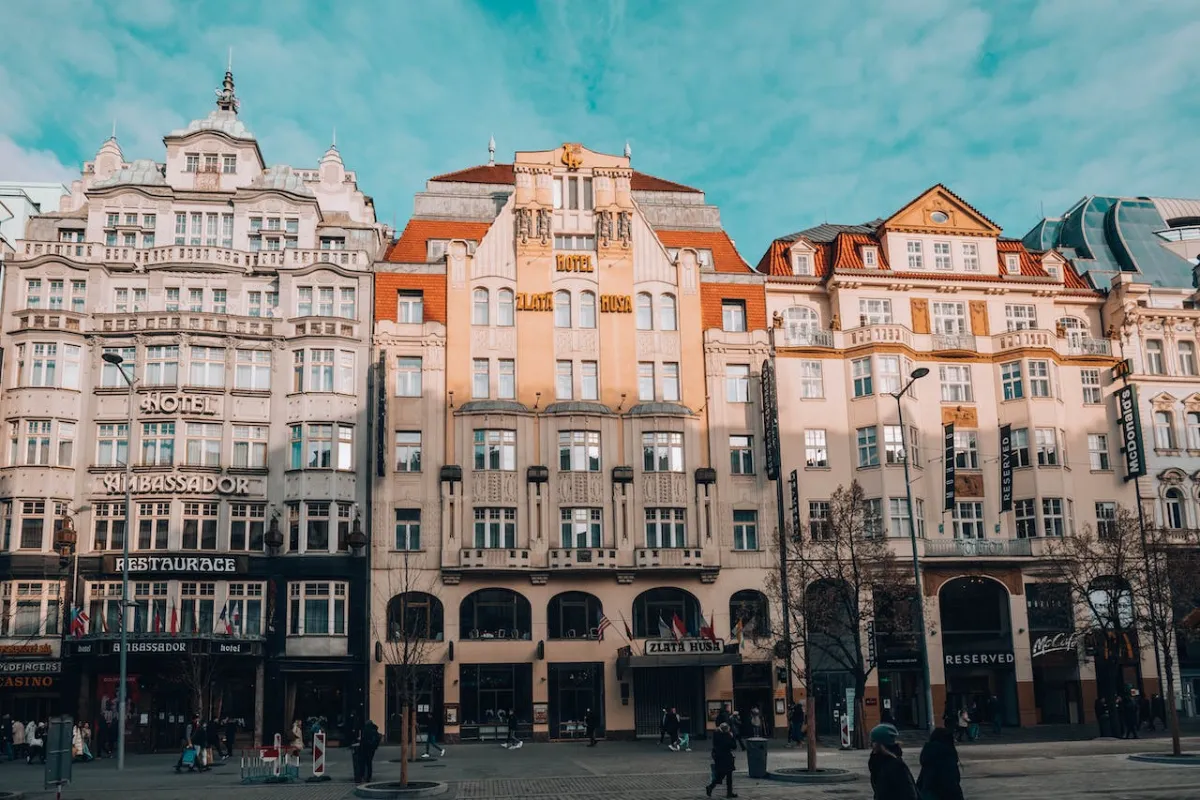
The Golden Goose hotel (Zlatá Husa) in Wenceslas Square in Prague, ©Tran / Unsplash
Wenceslas Square is not only a popular tourist destination in Prague, but it also holds significant cultural importance for the Czech people.
Here are a few sub-sections that highlight its cultural significance.
Saint Wenceslas
The square is named after Saint Wenceslas, the patron saint of Bohemia. The equestrian statue of Saint Wenceslas in the yard is an important symbol of Czech culture and history.
The statue depicts the saint riding a horse, accompanied by four Czech patron saints. The figure is a popular meeting point for tourists and locals alike.
Public Gatherings
Wenceslas Square has been a site for public gatherings and demonstrations throughout history.
It has witnessed many significant historical events, including the Velvet Revolution in 1989, which led to the end of communist rule in Czechoslovakia. The square remains popular for public affairs, celebrations, and parades.
Christmas Market
Wenceslas Square is transformed into a magical Christmas market during the holiday season. The market features traditional Czech food and drink, handmade crafts, and a festive atmosphere.
The market is a popular destination for locals and tourists and a great place to experience Czech holiday traditions.
Overall, Wenceslas Square holds significant cultural importance for the Czech people. Its equestrian statue of Saint Wenceslas, its history of public gatherings and demonstrations, and its festive Christmas market all contribute to its cultural significance.
Architectural Marvels of Wenceslas Square
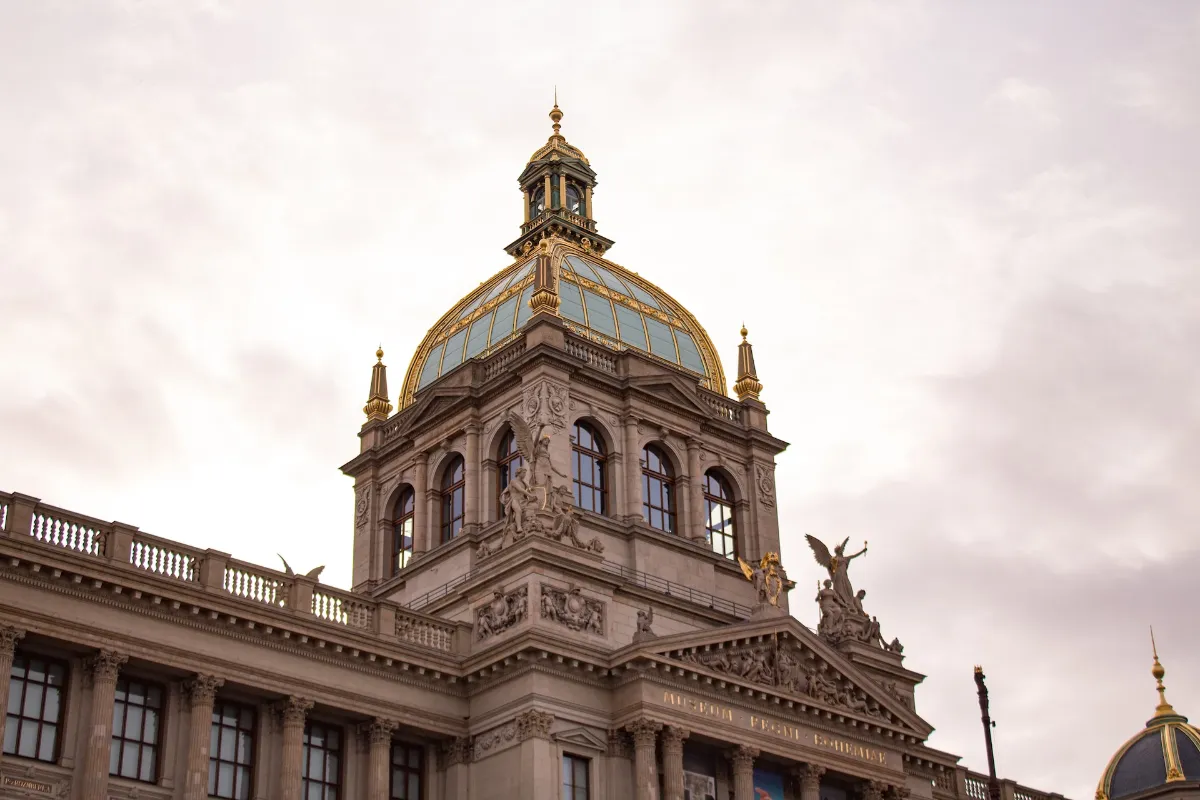
A close-up shot of the National Museum building in Prague, ©Fazacas / Unsplash
Wenceslas Square is home to several impressive buildings that showcase different architectural styles. Here are two notable highlights:
National Museum
The National Museum is located at the top of Wenceslas Square and is a stunning example of neo-Renaissance architecture. The building was designed by Josef Schulz and built between 1885 and 1891.
The National Museum houses a vast collection of natural history specimens and cultural artefacts, making it an essential stop for anyone interested in history.
The museum underwent a significant reconstruction between 2011 and 2018, which restored the building to its original grandeur.
Melantrich Building
The Melantrich Building is a prominent feature of Wenceslas Square and is an excellent example of functionalist architecture.
The building was constructed in 1926 by architect Václav Roštlapil and was originally used as the headquarters for the Melantrich publishing house.
The Melantrich Building is known for its clean lines and geometric shapes, typical of the functionalist style. Today, the building houses several shops and offices and is a popular tourist destination.
The National Museum and the Melantrich Building are must-see attractions for anyone visiting Wenceslas Square. Whether you’re interested in history or architecture, these buildings will impress.
Commerce & Entertainment
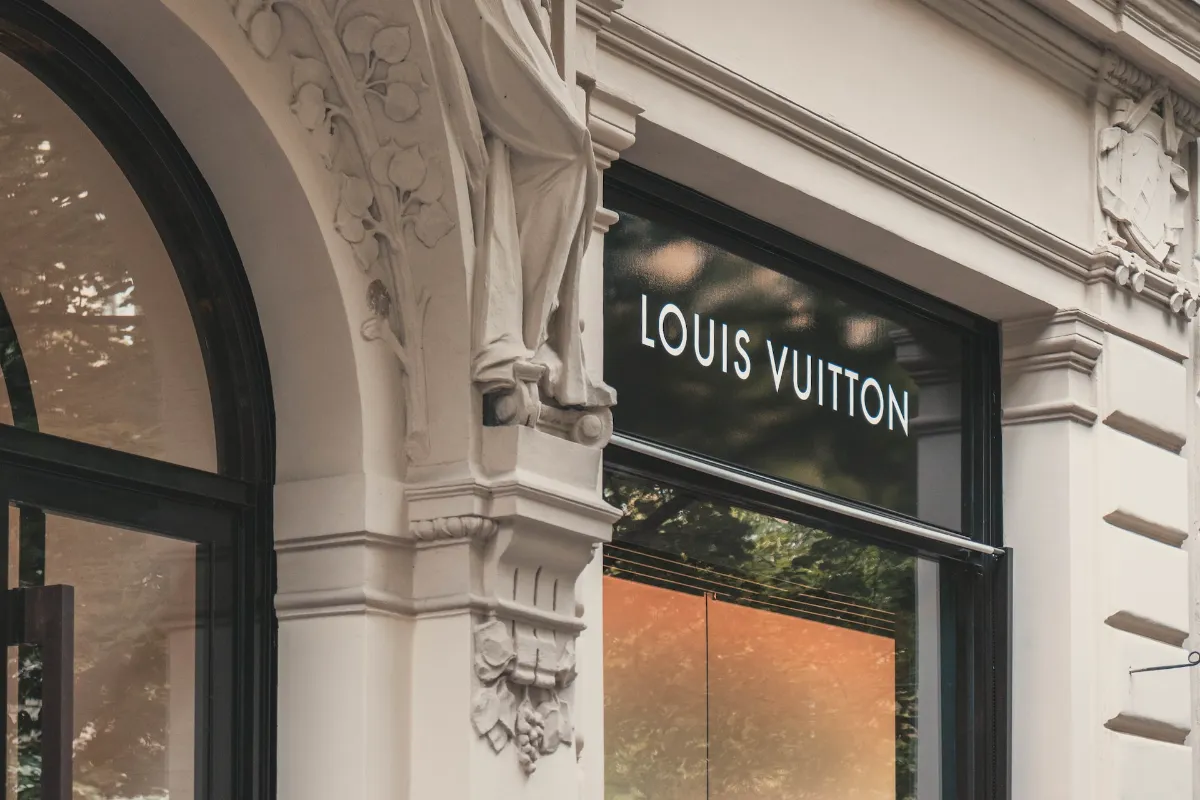
A Louis Vuitton brand store located at Wenceslas Square in Prague, ©Wiediger / Unsplash
Wenceslas Square is the centre of commerce and entertainment in Prague. Whether you are looking for a shopping spree, a relaxing meal, or a night out, this square has it all.
Here are some highlights of the commerce and entertainment scene in Wenceslas Square.
Shopping Scene
Wenceslas Square has various shops, ranging from high-end boutiques to affordable retail stores. If you are looking for luxury items, you can find them at the many designer shops along the square.
Many retail stores offer clothing, electronics, and souvenirs for more affordable options.
Food and Drink
The square is also a foodie’s paradise, with many restaurants and cafes offering traditional Czech cuisine and international dishes.
From cozy cafes to elegant restaurants, you can find a place to satisfy your hunger and quench your thirst. You can also find street vendors selling traditional Czech snacks like trdelník (chimney cake) and klobása (sausage).
Nightlife
When the sun goes down, the nightlife in Wenceslas Square comes alive. There are plenty of pubs and bars where you can enjoy a beer or a cocktail. If you are a fan of live music, you can catch a show at one of the many music venues in the area.
Overall, Wenceslas Square is the perfect place to spend a day or an evening in Prague. With its wide range of shopping, dining, and entertainment options, you will surely find something that suits your taste and budget.
Transportation & Accessibility
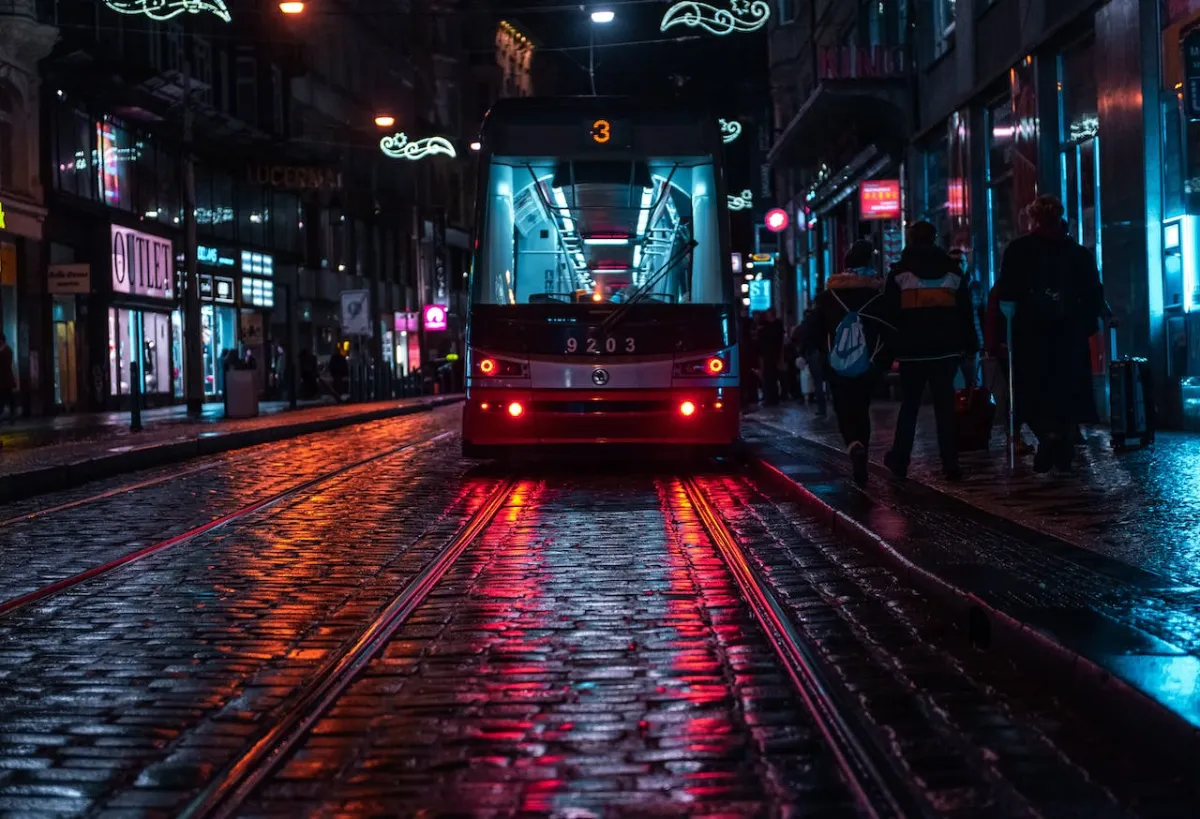
The night tram passing through the street in Prague, ©Berikashvili / Pexels
Wenceslas Square is located in the heart of Prague’s New Town and is easily accessible by various means of transportation. The square is well-connected to the rest of the city by public transport, making it a convenient destination for locals and tourists.
If you’re arriving by metro, the closest station to Wenceslas Square is Můstek, which is served by lines A and B. From there, it’s just a short walk to the square. In addition, the Muzeum metro station is also nearby, which is served by lines A and C.
If you prefer to travel by tram, there are several tram stops located around the square, including Václavské náměstí, which is located right in the middle of the court. The tram network in Prague is extensive and provides easy access to most parts of the city.
If you’re driving to Wenceslas Square, several parking garages are nearby. However, due to the high pedestrian traffic in the area, it’s recommended that you park your car outside the city centre and use public transport to reach the square.
In terms of pedestrian traffic, the city of Prague has recently made efforts to improve the accessibility of Wenceslas Square.
By moving the tram track, the city has created a beautiful pedestrian promenade through the middle of the square, making it more accessible to ordinary city residents.
The square is also wheelchair accessible, with ramps and elevators provided in many of the surrounding buildings. Overall, Wenceslas Square is easily accessible by public transport and is well-suited for pedestrians.
With the metro station and tram stops located nearby and the pedestrian promenade running through the middle of the square, it’s easy to get to and around the yard.
Tourist Information
If you plan to visit Wenceslas Square, it’s helpful to know about the tourist information available in the area. Here are some details that can make your visit more enjoyable.
Local Tours
Wenceslas Square is a popular hub for local tours, including walking and bike tours. These tours are a great way to explore the area and learn more about its history and culture.
Some of the popular tours include the Prague Castle tour, the Old Town tour, and the Jewish Quarter tour. These tours are usually led by knowledgeable guides who can provide insights and information you might not find in guidebooks.
Visitor Experiences
Apart from local tours, many visitor experiences are available in the area. For instance, you can ride a horse-drawn carriage and explore the square in style.
You can also take a guided tour of the National Museum, which overlooks the square. Additionally, you can explore the area’s many shops, cafes, and restaurants and experience the local culture and cuisine.
Opening Hours
The tourist information centre in Wenceslas Square is open every day from 9 am to 7 pm.
The centre provides visitors with maps, brochures, and other useful information about the area. You can also find information about local tours and attractions at the centre.
Meeting Point
Wenceslas Square is a popular meeting point for locals and tourists alike.
If you’re meeting someone in the area, it’s helpful to know that several landmarks, such as the Statue of Saint Wenceslas, the National Museum, and the horse-drawn carriages, can serve as meeting points.
Map
A map of the area is always helpful when exploring Wenceslas Square.
You can find maps at the tourist information centre or online. The map will help you navigate the area and find the attractions and landmarks that you want to see.
Locals and Tourists
Wenceslas Square is a popular destination for both locals and tourists. You’ll find a mix of people in the area, which adds to its vibrant and lively atmosphere.
If you want to experience the local culture and interact with the locals, you can explore the area’s many shops, cafes, and restaurants.
Old Town Square and New Town
Wenceslas Square is located in the New Town area of Prague, known for its modern architecture and vibrant nightlife.
If you’re interested in history and culture, you can also explore the nearby Old Town Square, home to many historic buildings and landmarks.
Overall, Wenceslas Square is a must-visit destination in Prague. Whether you’re interested in history and culture or want to explore the local shops and restaurants, there’s something for everyone in the area.
Ready to step into Prague’s vibrant past?
Grab your ticket now for an augmented-reality adventure through Wenceslas Square!









